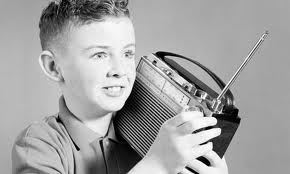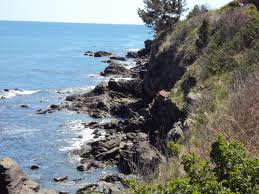11:55 am — JazzBeyondJazz attends the Newport Jazz Fest today, Aug 7, by listening on NPR,  and reviewing as here it happens (tweeting #newportjazz). Ten performances are scheduled over 7 hours, and I won’t listen to everything, but will chime in with info and responses to the music and the broadcast (and I invite comments, discussion, even disagreements!). I did it yesterday and had some fun, so here goes . . .
and reviewing as here it happens (tweeting #newportjazz). Ten performances are scheduled over 7 hours, and I won’t listen to everything, but will chime in with info and responses to the music and the broadcast (and I invite comments, discussion, even disagreements!). I did it yesterday and had some fun, so here goes . . .
12:05 — Starting with Randy Weston‘s trio, NOT live today but as they ended the Newport jazz fest last night. Weston sounds in a particularly lighthearted, quick-fingered mood and why not? At age 85 he’s gotten a Guggenheim for his future work, issued a well-received autobiography and a new album, The Storyteller; he’s in vigorous good health and plays at the top of his genre. Left hand rocksteady, right hand doin’ what he wants it to, “free” in the manner of Monk, elegant a la Ellington, with plenty of nuance in engagement with percussionist Neil Clarke and slap-bassist Alex Blake.
12:30 I do wonder, though, why the NPR broadcast touted as “live now from Newport” isn’t that, but instead has pre-recorded sets (edited, too, right?) on air, in a sequence different than the way things are going at Fort Adams State Park. I can imagine this gives the radio producers more control, but it renders tweets using the hashtag #newportjazz a mish-mash of reports from the (wet) field about the music in real-time with comments about what we’re hearing on the audio webcast. Does this confuse anyone else?
12:40 “That’s the Aug 6 2011 version!” exults Weston of his trio’s rendition of “High Fly” — “I never heard it that way before, either. I don’t know what those guys are going to do!” Yeah, that’s a beauty of jazz, inherent in the art form’s DNA. And another defining gene is the blues, which the pianist’s play now. For the classic piano blues: Otis Spann, , Speckled Red, Jay McShann, Jimmy Yancey.
12:50 Hiromi — also pre-recorded, though Josh Jackson promises James Farm coming next will be for-real live. She’s working Gershwin’s “I Got Rhythm” changes — left hand demonstrating full independence from her right, which I’ll call “sprightly.” If she slowed down just a fraction, the feelings might seep from these notes, but instead she pounces on the idea and presses it forward. Ah, now she states the melody — and hammers fast as if it’s “The Flight of the Bumblebee.” Am I impressed? Uh, not so much. But she’s good. . .
1:01 James Farm. I’ve been waiting for this, haven’t heard the praised CD, and I like Joshua Redman in general. Pianist Aaron Parks underwhelmed me at the PDX Jazz Fest (Portland OR) a couple years ago, bassist Matt Penman sounds solid, drummer Eric Harland is propelling this. Hurrah for pro-active drummers! The link between Parks and Redman seems palpable as the saxophonist picks up a phrase the pianist plays, Parks subsides while Redman expands upon it, at first unaccompanied, and when piano, bass and drums return they eddy around while the tenor works, evidently attempting to set up another song or episode — ah, now they fall in line with him. Sort of like Keith Jarrett’s American quartet with Joshua’s dad Dewey Redman, if DR had been more in the lead and if Paul Motian were a different kind of drummer than he is/was (I like him fine the way he is/was, just sayin’).
1:20 Whoa! Now Joshua and Harland are building to a climax, bursting with energy, and the quartet is united leading to an end as if it has no choice. I like the way they play, but can’t say the material is doing much to make it memorable. Ok — if it works to launch Josh like he’s rocketing, that chord pattern must be doing its duty. There’s a sing-song quality, no? to most of this book. Yes, melodies are hard to compose, though melodic ideas unfurl from a gifted improviser’s imagination and instrumental accomplishment ’cause that’s the task is about. (1:47 pm)
Harland drums-dance. Rimshots, tom and snare-rubbing? Dynamite drummer.
2:08 pm – In 1960 Charles Mingus established a Newport Rebels rump-fest, recording with Max Roach, Eric Dolphy, Roy Eldridge and Jo Jones, and George Wein quietly funded it as well as his main shows. So great to hear the Mingus Big Band on the radio, at a fest, or at the Jazz Standard on Monday nights (spelled by the differently-instrumented Mingus Orchestra and smaller Mingus Dynasty).
3:15 — Server hosting me at ArtsJournal went down, but I’ve been enjoying Avishai Cohen, jaunty trumpeter who started set with “Art Deco” by Don Cherry — there I was complaining about no melodies written these days, and here’s one (albeit 20 years old) well worth keeping in mind (though damn, the album it’s from, of the same name, is out of print, can’t buy Cherry’s version on Amazon or iTunes. Reissue, please — also features Texas tenor saxman James Clay).
Dig Cohen’s strolling, relaxed but with it approach; how hard it is for a trumpeter to carry off a trio performance, sans chordal instrument. Like he’s in the upbeat line with Armstrong, Dizzy, Clifford Brown, Cherry, Lester Bowie, Taylor Ho Bynum — very companionable, and Drew Gress, bass; Eric Harland (just heard w/James Farm, equally appropriate though from a different point of view here) are fine accompanists. Sister Anat Cohen showing her rangy stuff, reminiscent of Alvin Batiste . . . Avishai says his latest record is a tribute to Ornette Coleman, it’s probably in my waiting-to-be-heard stack and I’ll have to pull it out right after this afternoon’s over. Yes! with Avishai, Anat, Drew and Eric now a firm quartet! That’s some jazz. . .
3:27 — Mario Castro Quintet — from Berklee College of Music, but students or faculty or both? Trumpet/sax front line, finessed arrangement. Mature ensemble, but earnest.
3:53 – Josh Jackson interviews Rudresh Mahanthappa who explains his history with inspiring fellow saxophonist Bunky Green, coming up . . .
Eager for their Apex set . . .
3:59 – Ravi Coltrane quartet w/ Drew Gress, E.J. Strickland drums and Luis Perdomo, piano. When I’m at a festival, I can be immersed in the sound for hours without serious break (unless the music turns awful). At the radio, I’ve got to be dropping in and out, but gladly I’ve got desk work to do. . . At hour four the music’s beginning to blend into itself. However, Ravi is going to blow on Bob Dorough’s “Nothing Like You,” so let that distinguish these minutes from what’s come before . . .
Gee, they cut away from Ravi to hear Charles Lloyd w/Zakir Hussain — CL casting an exotic air though he treats the tarogato (Hungarian origin, maybe this one’s Turkish?) like a soprano sax he needn’t keep in tune.
4:45 As Lloyd plays flute, there’s a pianist with Sangam? Zakir singing? This sounds exceptional if you’ve never heard bansuri flute. Why don’t I buy the sanctity of this act?
4:54 – a pre-recorded set by John Hollenbeck’s Large Ensemble. JH employs repetition derived in part from minimalism; there’s a steady-state pulsing pedal point underneath here, gradually shifting to another pitch and –
4:57 -and some tape/live mix up. . . I guess it’s back to Hollenbeck on a tenor solo, with those vibes ringing and voice (?) crooning along, on is it “Witchita Lineman” stretched out?
5:11 – Too much Kenton for my taste. Large, alright, but stolid. No we’re not going to hear any swing in this. Blue either. “Man of Constant Sorrow,” sung by Theo Bleckmann and Mate McGarry. Studied, oddly arranged — organ behind TB. The band pumps a lot of air. Tony Malaby, Uri Caine. . . fine players. This’ll make me a Philistine but one can’t like everything, can one? In fact, I’m getting positively annoyed by the war whoops and noise.
5:30 – Miguel Zenon w/wind ensemble arranged by Argentine Guillermo Klein. The composition bears some resemblance to Hollenbeck’s due to the cyclical riffing. Zenon is a splashy horn player, and the drummer here splashes along with him on cymbals, like waves crashing through the massive ensemble. I like better than the ambitious writing the tune at 6:10, also florid but based on showing off more of Zenon in a typical combo setting, Perdomo comping.
Alto, alto, alto – this broadcast will conclude with Apex, which earlier I was looking forward to but now am concerned about. Streaming scads of notes in the high-pitched register. After Zenon’s cadenza demonstration of horn skills, further demonstrations of skills aren’t what I’d like but rather a focused, intentional collaboratively-arrived-at music that shakes the ground. The fast bass run under Zenon now is doin’ it, the rhythm-against-rhythm, the swelling winds and dissonant piano clusters, all surrounding and buoying MZ . . . and the drums, the drums. You can’t have a good jazz band without a good drummer — a good drummer can make a middling jazz band a much better one.
6:30: Patrick ABlogSupreme Jarenwattananon explains we’ll hear only first part of the Apex set. Which will do just fine — from Rudresh Mahanthappa’s first melismatic call the sax timbre is richer even that what Miguel’s. This tune’s from Kinsmen, RM’s album pre-Apex, in which he went back to India to perform with Carnatic saxist. . . Bunky can do anything,though, playing himself with Indian inflections included. Throw in heaping amounts of Coltrane — who’s playing piano, that’s not Vijay Iyer is it? And is this Eric Harland again on drums? No need for 20 musicians if five can drive like this. But what, is the broadcast gonna end on a bass solo???? That’s what they call, in Newport, a cliffhanger. . .  No! More sax, please — We’re jazzlovers.
No! More sax, please — We’re jazzlovers.
howardmandel.com
